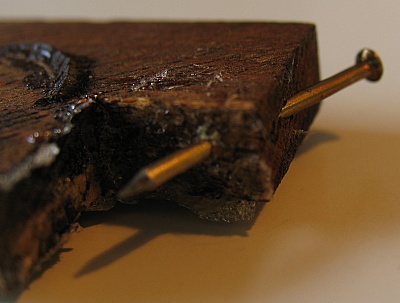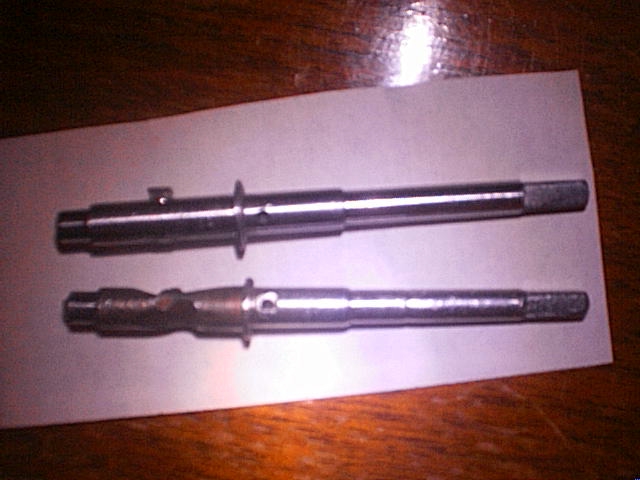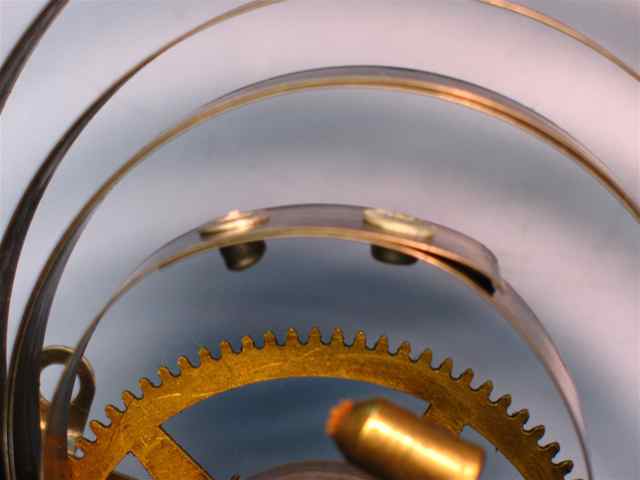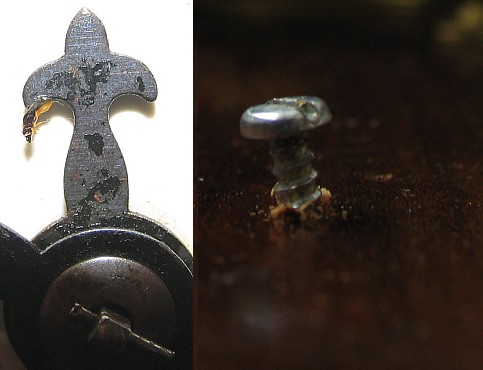
| WWT Shows | CLICK TO: Join and Support Internet Horology Club 185™ | IHC185™ Forums |

|
• Check Out Our... • • TWO Book Offer! • |
Welcome Aboard IHC185™  Internet Horology Club 185
Internet Horology Club 185  IHC185™ Discussion Site Main Page
IHC185™ Discussion Site Main Page  Technical, Shop Talk and Internet Links
Technical, Shop Talk and Internet Links  Clock Repair Questions and Answers
Clock Repair Questions and Answers  Gustav Becker always striking two
Gustav Becker always striking two
 Internet Horology Club 185
Internet Horology Club 185  IHC185™ Discussion Site Main Page
IHC185™ Discussion Site Main Page  Technical, Shop Talk and Internet Links
Technical, Shop Talk and Internet Links  Clock Repair Questions and Answers
Clock Repair Questions and Answers  Gustav Becker always striking two
Gustav Becker always striking twoGo  | New Topic  | Find-Or-Search  | Notify  | Tools  | Reply to Post  |  |
Hi again, I recently acquired a 1920s Gustav Becker wall clock which works well except that it always strikes two on every hour. I took the dial off and noted that the rack doesn't get to fall down properly because it's stopped by a lever that is supposed to have been pushed out of the way by the time the hour arrives. The centre wheel, instead of having a four-lobed cam, has four small pins sticking out of it. The pin that arrives at the top on the hour is closer to the edge of the wheel and so it pushes further and releases the striking mechanism. The problem seems to be that this pin is bent and doesn't push far enough. I think the solution is to bend this pin back again. Here's the question: does anyone know if bending this pin risks snapping it off? I tried gently pushing it with a screwdriver but gently doesn't move it so I stopped. Thanks in advance for any help. One day I hope to have enough experience to help someone else :-)  | |||
|
| Honorary Life Member Internet Consultant |
Hi John, Your discretion already marks you as a superior workman. Most people would be posting to find out how to replace the broken pin. Bravo! I have not seen this movement before, but here's how I'd tackle it.
Student pilots are taught what to do if they get lost. Follow the three C's. Climb, Call, Confess. In other words, ask for help. This is the place to do that. Good job. By the way, I see that you are in Finland. Back in the very early days of the internet, professor Timo Salvi at the university of Vaasa was a great inspiration to me, and an internet friend. Best, Tom | |||
|
Hi Tom, Thanks for your reply. Yes, I live in Finland but I'm actually British. I don't know about the superior workman, I'm just terrified of ruining this lovely clock. I'm a bit of a klutz these days, always dropping tools into things and knocking things over. This is just a hobby at the moment and I don't have many fancy tools, but I do have a drill press and I think I could easily drill out the pin if it breaks off, but I think the replacement would be a piece of soldered wire Thanks again for your help, John  | ||||
|
| Honorary Life Member Internet Consultant |
Hi John, Thanks for the frank reply. My advice has changed now. That Becker is a nice old German movement. It would probably break your heart, and sour you on clock repair, if your attempt to bend the pin failed. You would find yourself in even deeper water, so I recommend that you come to a full stop. Buy a movement that won't matter much if you trash it. An American time and strike is an excellent place to start. Get a copy of David Goodman's book, "This old clock", which walks you through everything you need to know about American clock repair. Get that first simple movement done. Having a win under your belt does a world of good. Next, take a long sober look at the Becker. Ask yourself, "Am I ready? Am I confident that I can take this apart and restore it?" It's no big deal if the answer is "No". The clock has probably been around for close to one hundred years. It's not in a hurry. Build your confidence, experience, and tool inventory at your own pace. The Becker deserves your patience. Experiment with cheap, common movements until you are ready. You will know when the time comes to move ahead. Lastly, here's the best general advice I can give: I always assume that the clock will outlive me. Some future repairman will scrutinize my work. Will he nod in approvement, or say something unkind about my mom? A gob of solder would probably produce the latter. You will know what I mean when you encounter a roofing nail as a replacement part. Or worse, a quartz movement in a fine old clock. I could tell horror stories all day. You have selected a fine hobby. Do things that you will be proud of. Sorry if that was preachy. I'm old, and hereby claim the universal right of geriatric license. Best, Tom | |||
|
Hi Tom, You're not being preachy at all, in fact you pretty much already understand how I feel about all this. I started this whole clock thing about 2 months ago when I brought my old childhood chiming clock back from England. Although it was important to me, it was very bashed up and not antique enough to worry about, so I took it apart and put it back together three times over the next month. I did the same with an old Hermle that I'd picked up in a flea market for 18 euros. Now I'm working on an old Vienna springer that I got in the same flea market. It was so filthy and smashed up that I bought an ultrasonic cleaner to make sure I could clean it properly :-) I'm planning to reassemble the Vienna, sort out another dirty flea market wall clock and an antique Deco chiming clock before I dare even think about dismantling the Becker. I have already made quite a few terrible mistakes, the worst of which was trying to clean a brass dial with alcohol -- it instantly destroyed the finish and I can't fix it. At that moment I was so upset that I almost threw all my clocks out of the window and gave up. But I don't give up easily, and I'm also patient enough these days that I can wait, like you suggested, to get more experience before touching the real antiques. While I'm blahing I might as well mention my main problem at the moment which is that although I can now clean and reassemble a chiming clock, I am stuck on the mainsprings because, having taken one out of the barrel, I can't get it back in. I have no strength in my wrists and I can't seem to find anyone who can sell me a mainspring winder. Perhaps I just need to keep scanning eBay for that. As a shortcut I was thinking of just dropping the whole barrel in the cleaner which would no doubt get a bit of it clean; that can't be any worse than dunking a movement in paraffin. But I'm worried it won't dry properly and go rusty. I guess I should get an old rubbishy clock and try that on it. Your advice of practising on junk is good advice. Oh, about the roofing nail, have a look at this picture of the Vienna before I fixed up the case. Thanks again for the advice, John  | ||||
|
| Honorary Life Member Internet Consultant |
Hi John, Maybe we should start a "Horror Stories" thread. Here's a good one. I had a typical American time and strike in for repair. One of the winding arbors was horribly mangled. As you know, the springs have holes in the ends, and the arbors have hooks. One of the hooks had broken off. Someone did a job on the arbor using his grinding wheel. He ground some of it down, leaving a nub of metal to catch the hole in the spring. To be fair, the person was probably the owner, and he did get his clock running again. Then again, someone may have done the job for a fee, which puts him in the "hack" category in my book. That was the kindest word I could think of. The picture shows the mangled arbor below, and my replacement above. I put the poor old arbor in the case with a note that I had made a new one. Best, Tom  | |||
|
Hi Guys, This is an interesting topic you have here. One thing about a Becker is that its built tough. They were made to last. One thing I would recommend is make your self some good drawings of the movement or take digital photos from every angle for reference purposes. I have a couple of photos of a Mission Clock movement that was beyond repair, but it had some unique repairs made to it at some time on the springs. But the spring finally snapped in the middle. I use a Webster spring winder, and have good luck with it. But I just got done with a Seth Thomas 120 movement and my spring winder didn't do much good on it. The barrels faced the wrong way. I had to wind the spring into the barrel by hand and that wasn't any fun. But its running beautifully now. The case isn't pretty tho. Bill Carlson  | ||||
|
This is the other spring repair. The picture isn't that good, but they had put a small bolt thru the spring. This clock had more badly worn pivots and bushings than I have seen in 30 years. I bought the same clock off of ebay and the movement was mint. It didn't look like it had hardly ever run. I was lucky!!!! And it was cheap !! Bill Carlson  | ||||
|
Hi Bill and Tom, Right from the start I decided to take lots of photos of a movement before doing anything to it. They have come in handy time and time again when I just can't remember where a part goes. As a side effect I am documenting the procedure at the same time. One day I might make a web page about it all. That spring repair looks like something awful I could have done, although I'm so scared of mainsprings I probably wouldn't do it. You mentioned a clock that was beyond repair. How does a clock get into that state? What kind of problems does it have that makes it unfixable? I'll attach another two pictures of horrors I found on my Vienna. There was a dead insect stuck to the hour hand and someone had put a screw into the case back which served no purpose whatsoever. John  | ||||
|
John: Beautiful GB Westminster in Art Deco, what the Germans call "Jungenshtihl". I have one, although not in as good a shape as yours. In addition to the bent pin that advances the rack, I would check to make certain your hour hand is tight enough to advance the snail. If the snail does not advance, the movement will continue striking the same hour over and over. Gently check to make sure nothing is jammed, and move the levers near the snail gently to make sure they are making contact with the different indentations in the snail, which is what changes the rack settings and controls the strike. If this fails, I will remove mine and take a photo for you. I need to chance a mainspring anyway. Nelson Queens, NY | ||||
|
Hi Nelson, Thanks for your input. I have verified that the snail advances correctly. In fact, I fixed the problem (for now) by putting a small piece of plastic tubing around one of the levers. This increases its width and gives an extra push to clear the rack. The clock is now on the wall and working properly, except it strikes about a minute late because of the bent pin. Would you be able to post a picture of your GB clock? John | ||||
|
| Powered by Social Strata |
| Your request is being processed... |
|
©2002-2025 Internet Horology Club 185™ - Lindell V. Riddle President - All Rights Reserved Worldwide

